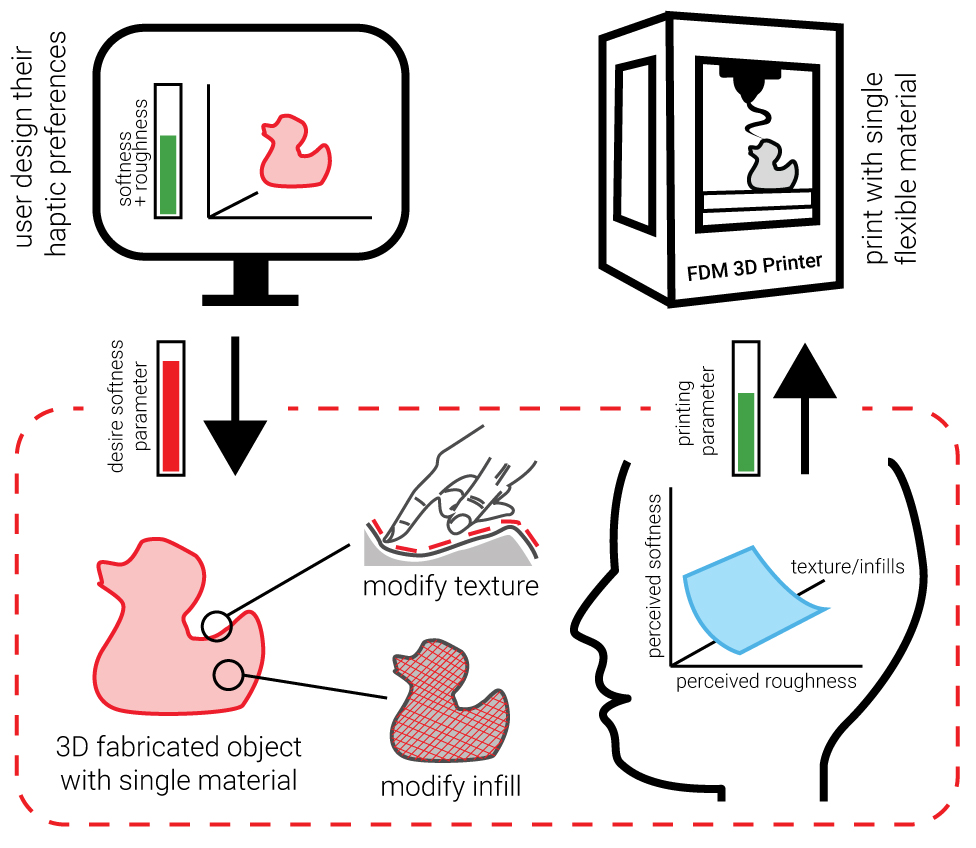Team
Motoki Miyoshi (Osaka University)Parinya Punpongsanon (Osaka University)
Daisuke Iwai (Osaka University)
Kosuke Sato (Osaka University)
SoftPrint: Investigating Haptic Softness Perception of 3D Printed Soft Object in FDM 3D Printers


Abstract
FDM 3D printers allow massive creativity in personal products, but their potential has been limited due to inability to manipulating material properties. Previous work had demonstrated that the desired roughness could be presented simply by controlling the spatial density of tiny pins on a printed surface. This article offers a means of providing the desired softness perception of a printed surface and the desired roughness to expand the haptic dimension over which a user can exert control. Specifically, we control the softness by manipulating the infill structures of a printed surface. However, it is known that a skin contact area affects softness perception. The roughness, which is controlled by pins’ density, may also affect the perceived softness of a printed surface. Therefore, we investigate how the internal structures and the density of the pins affect softness perception. Through psychophysical experiments, we derive a computational model that estimates the perceived softness from the density of the pins and the infill density of a printed surface.
Related Publications
Motoki Miyoshi, Parinya Punpongsanon, Daisuke Iwai, and Kosuke Sato. SoftPrint: Investigating Haptic Softness Perception of 3D Printed Soft Object in FDM 3D Printers. Journal of Imaging Science and Technology (Proceedings of Printing for Fabrication), Vol. 65, No. 4, pp. 40406:1-40406:8(8). July 2021.
Motoki Miyoshi, Parinya Punpongsanon, Daisuke Iwai, and Kosuke Sato. Investigation of Soft Display using Digital Fabrication and Phase-change Material. In Proceedings of 2021 IEEE 3rd Global Conference on Life Sciences and Technologies (LifeTech), pp. 513-514. Nara, Japan, March 2021.

